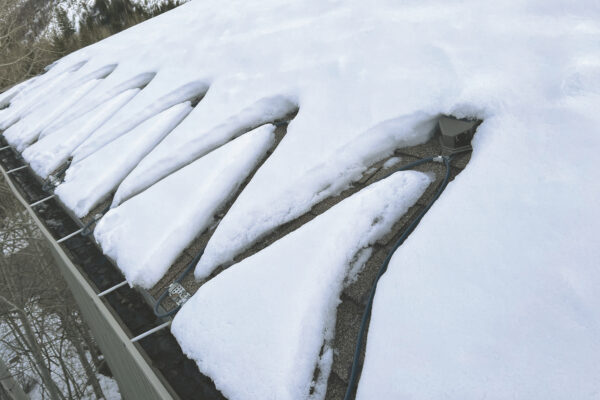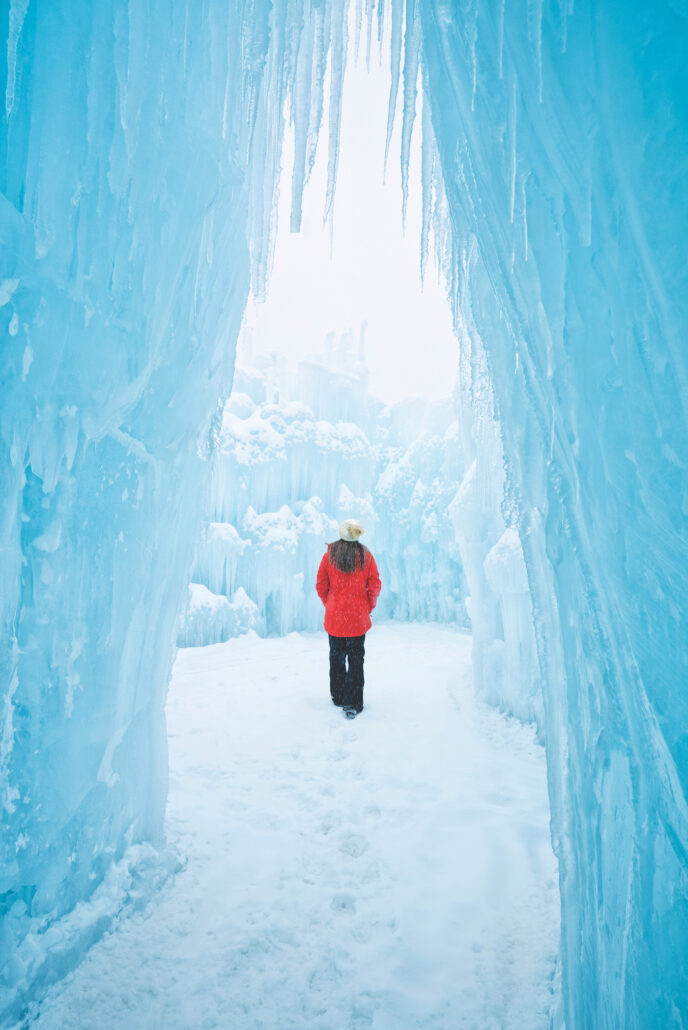
Powder Watts cuts energy consumption, saves users hundreds of dollars a month
The snow solution
Winter/Spring 23-24
Written By: Evie Carrick | Images: Courtesy Powder Watts
Anyone who has lived in a mountain town can understand the predicament Tom Clardy was in eight years ago. After a heavy load of snow cracked several of the rooftop solar panels on his Park City home, he ventured onto the roof to clear the snow and found himself falling through the top layer of snow and into a “snow cave” that was formed by the rooftop heat cables that ran along the north side of his roof.
Inside the cave it was warm and dry. The heat cables had clearly been doing their job. But even though the roof around the heat cables was clear and dry, they were still pumping out heat — resulting in an electric bill that was upwards of $500 a month.
Once he was back on solid ground, Tom turned off the heat cables — and because he is an inquisitive, solutions-oriented type of person, he installed a camera on the roof so he could see when he should turn the heat cables on again. It took some leg work, and a daily camera check, but Tom was able to only turn on his heat cables when they were needed — a move that saved him well over $350 a month in the winter.
But beyond financial savings, Tom had stumbled on what is arguably a mountain town’s biggest energy saving opportunity: By only using the heat cables when they are needed — rather than turning them on in November and letting them run until April — he was able to save an estimated 7,200 watts of electricity every hour. (For context, a light that’s left on for an hour uses around 60 watts of electricity.)
“It’s a huge amount of energy savings that you can get all in one pass. Thousands of watts at once rather than a bit here and there,” Tom explains.
Tom calls the heat cable problem the “largest unmanaged electric load in the country” because the cables just run and run and run until the homeowner hopefully remembers to turn them off in the spring. In a mountain town like Park City, he says heat cables are “the largest consumer of electricity in the winter.”

The solution, Tom found out, is just a little monitoring. And after five years of testing cameras on roofs across the Wasatch, Minnesota and New Hampshire, he launched Powder Watts last winter — just in time for the snowiest winter on record.
“Last year was so intense with snow that most of my neighbors had some sort of leak problem,” says Tom, who lives in Pinebrook. But even after a winter that brought over 500 inches of snow to local ski areas, Powder Watts customers reported “zero leaks.”
Here’s how it works: The Powder Watts camera hooks up to existing heat cables (or they can install new ones) and monitors the roof 24/7. The images are reviewed by a computer every hour and by a Powder Watts team member once a day. Anytime moisture, snow or ice are detected, the heat cables automatically turn on. Homeowners can also review the footage and make the choice to turn the cables on or off using the Powder Watts app. The system also monitors heat cable health, so homeowners know when to replace the cable.
Powder Watts provides peace of mind — you don’t have to worry about your roof caving in, leaks, or cable problems — in addition to massive monthly cost and energy savings. Tom says the $350-plus that he saves on this monthly, winter electric bill is “nothing” compared to the savings many Park City homeowners and businesses have seen.
But the financial benefits pale in comparison to the environmental benefits. The massive energy savings have gotten the attention of the National Science Foundation, an independent federal agency that accelerates new technologies and big ideas. They gave Powder Watts both financial support to grow their business and an award to recognize their innovative, energy-saving solution.
The Park City company, which was founded by a team of Parkites, is also seeing plenty of local support. Rocky Mountain Power is offering substantial rebates for both commercial customers and homeowners, and Tom says ski resorts — who use heat cables to keep snow off of everything from hotel roofs to ski patrol huts — have jumped on board.
The money and energy-saving solution is both simple and groundbreaking — and it’s all thanks to some cracked solar panels, plenty of snow, and an unfortunate fall by the right person at the right time.

